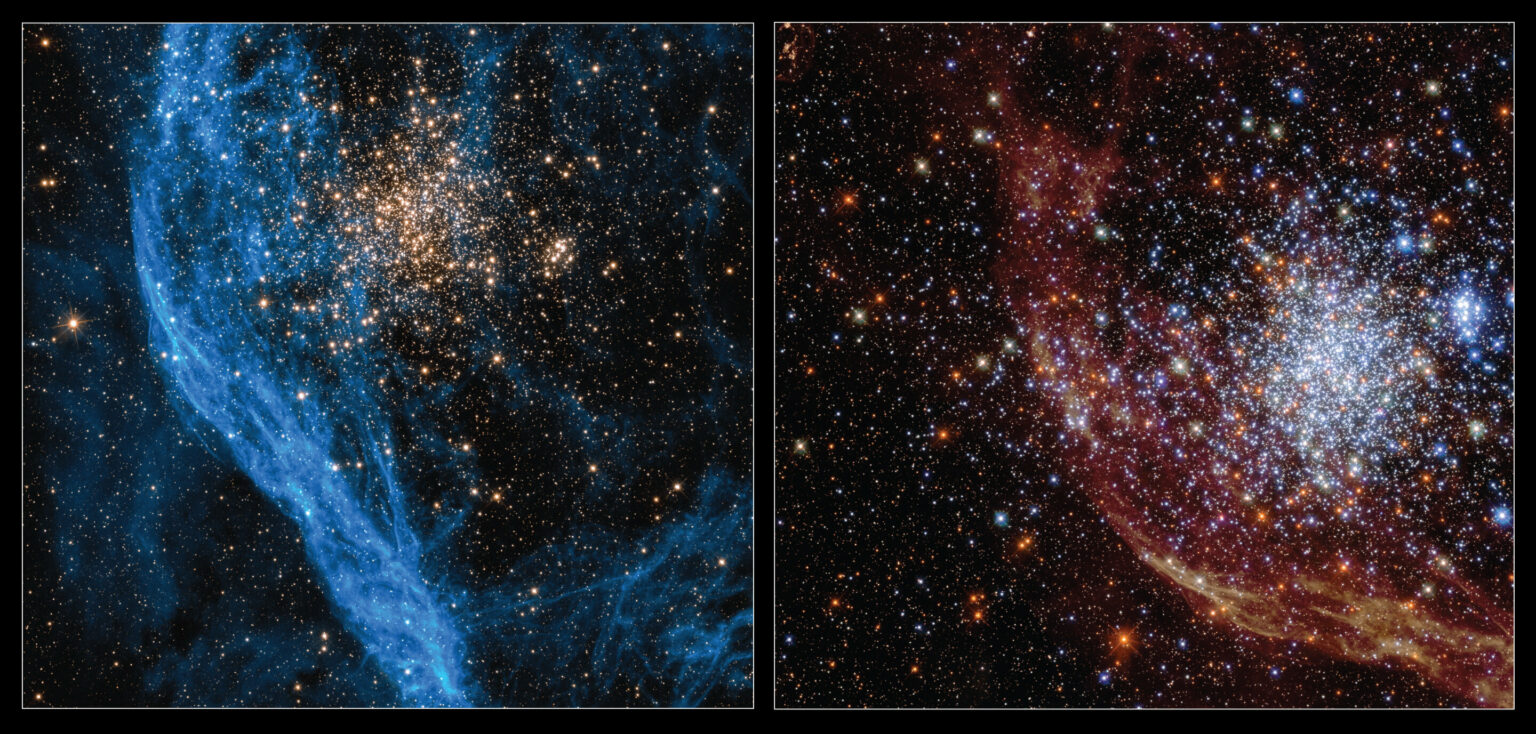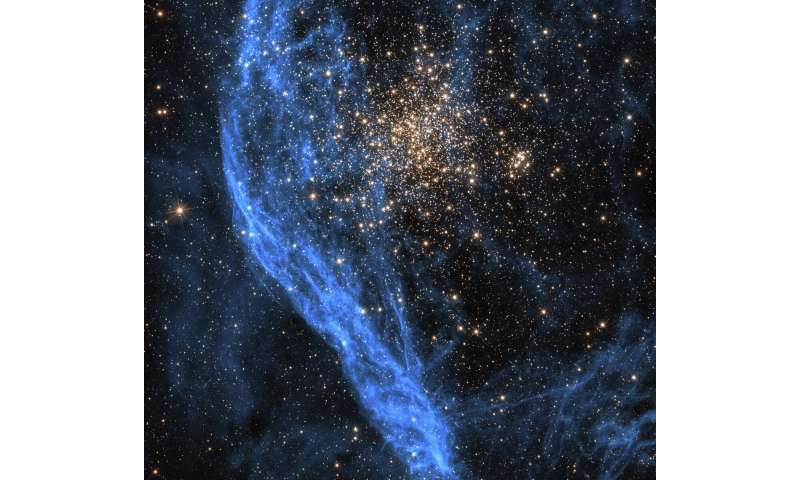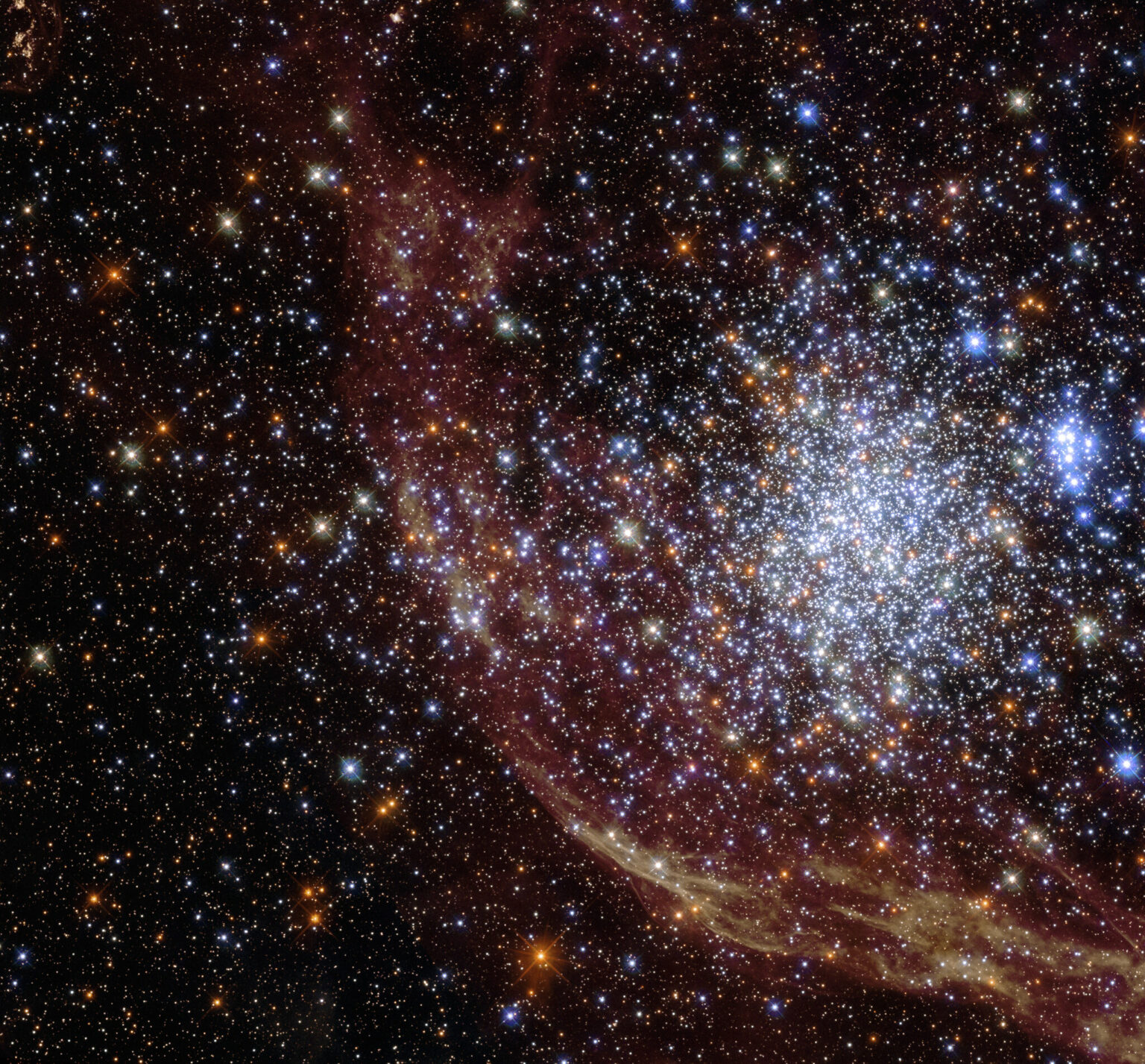Scientists working with the Hubble Space Telescope have obtained two images of the same object that are very different from each other. They depict the globular cluster NGC 1850, located in the Large Magellanic Cloud.

Two photos, one object
Using the Hubble Space Telescope, scientists have obtained two images of the same astronomical object, which are very different from each other. Each image is really painted in pseudo-colors, since the original image is obtained in a spectrum wider than the human eye can perceive.

The object of study is the globular cluster NGC 1850, which is located in the constellation Dorado. It is part of the Large Magellanic Cloud, which is a satellite of the Milky Way and is removed from the Sun at a distance of 160 thousand light-years.
The first of the images is made in blue colors. It was created based on data obtained in the infrared and visible spectra. The red image covers a wider range of waves: from near ultraviolet to near infrared. Together they demonstrate how different the same object can be at different wavelengths of electromagnetic waves.
What is interesting about the globular cluster NGC 1850
First of all, the globular cluster NGC 1850 is interesting because its age is only 100 million years. There is simply no such young object like it in our Galaxy. That is why scientists are very interested in the processes taking place in this cluster.

Astrophysicists suggested that when the first generation of stars was born at NGC 1850, it emitted a large amount of dust and gas. However, due to its high density, they were held inside by the forces of gravity. Moreover, the cluster actively attracted matter from the outside.
These two factors caused the globular cluster to grow rapidly, and soon it became twice as large as it was. The second generation of luminaries, which we are observing now, was formed from gas and dust. The cluster is shrouded in a diffuse nebula, through which bright blue stars and red giants shine, which are running out of thermonuclear fuel. In addition, astronomers have discovered a rather massive black hole inside.
According to phys.org
Follow us on Twitter to get the most interesting space news in time
https://twitter.com/ust_magazine

